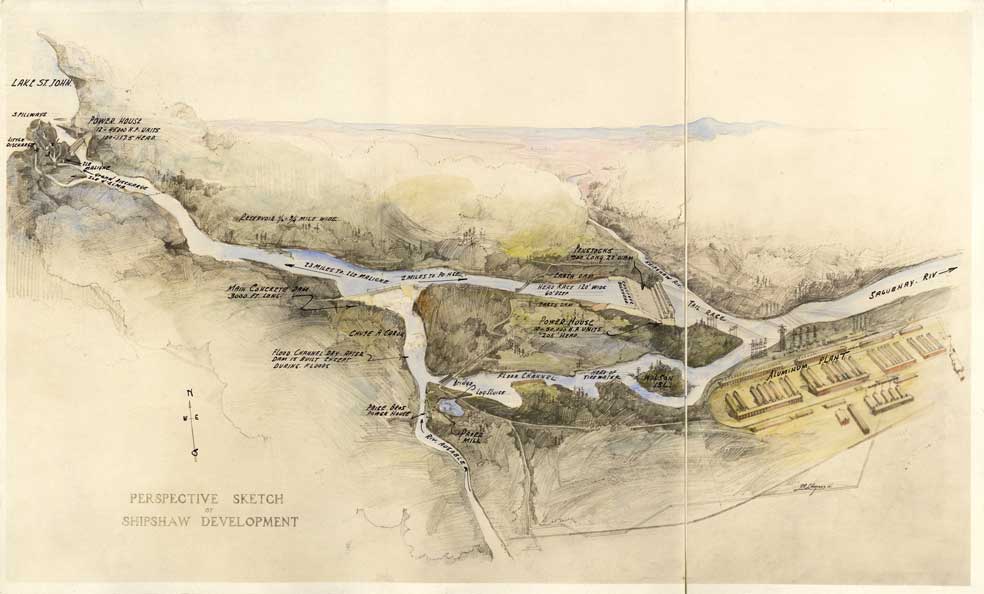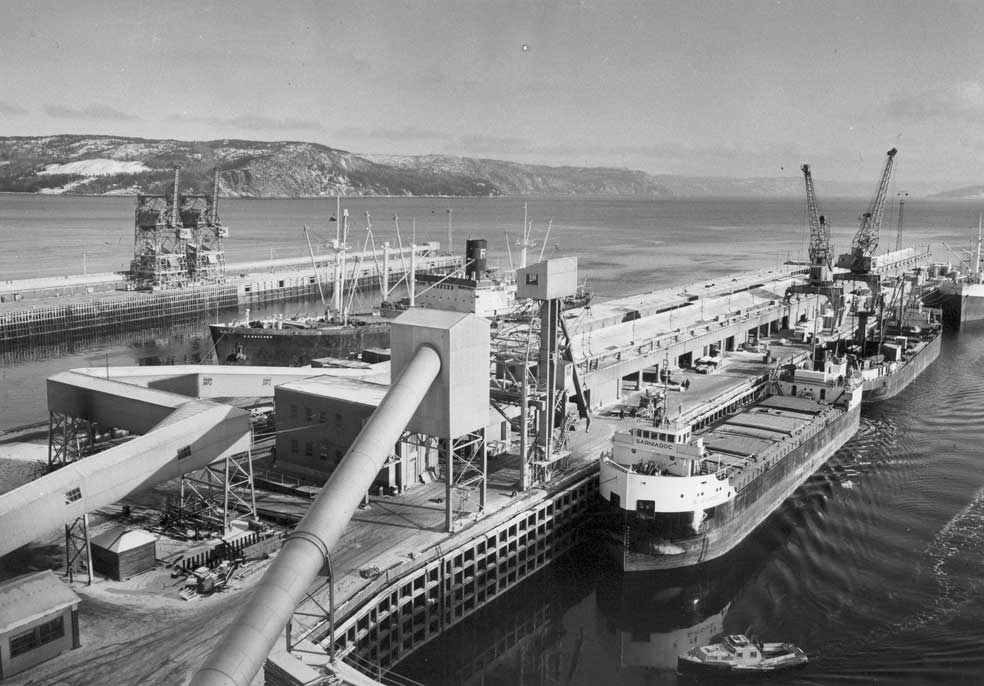A site featuring all the characteristics required for a large-scale industrial development
 |
Representation of the hydroelectric facilities and the astounding aluminum plant which was contemplated, Pierre-Richard Hogner for Alcoa, 1925-1926. |
The creation of Arvida is based on industrial operations of unprecedented proportions inspired by the region’s unique potential and the remarkable dynamics of the multinational aluminum company, Alcoa. The ideal characteristics of the chosen site can be summed up in three points. Transportation infrastructures that Julien-Édouard-Alfred Dubuc, the well-known industrialist of the region, had been praising to American investors since 1911, such as the Port-Alfred deep-water port, near which he built a pulp-and-paper mill town of the same name; a potential for hydroelectric development that had until then supported the region’s development through typical industrial facilities (Val-Jalbert, Kénogami, Riverbend, Port-Alfred, etc.), that had not yet found takers requiring enough energy to use the great hydraulic reservoir of Lake Saint-Jean to its full potential; and, finally, the geological features of the soil (notably the presence of anorthosite), allowing the aluminum company to consider the implementation of an entirely self-sufficient plant equipped with innovative extraction processes, since all of its resources and means of exploitation could be found on site.
 |
Railroads and cranes allow materials to be moved and buildings to be erected for the construction of the Arvida plant, September 1926. |
Naturally, Arvida isn’t the first planned industrial city of the region, and neither is Arthur Vining Davis the first entrepreneur to dream of the area’s phenomenal hydroelectric potential; they nonetheless form the synthesis and culmination. At a time when hydropower exploitation was becoming a full-scale industry, William Price, another industrialist established in the area, had recently teamed up with James Buchanan Duke, the American tobacco magnate, to set up a hydropower project at the Grande Décharge (Alma) and Lake Saint-Jean, which would be taken over by the aluminum company, bringing life to Arvida and the subsequent industrialization of the Saguenay region.
The industrial development, which was born 450 miles north of Boston, as these little-known places on the American or world stage were developed in 1925, attests to the magnitude of the project. There is not only a 40-potroom smelter (most smelters at the time had fewer than five), but also a refinery to extract alumina from bauxite through an extremely energy-intensive process, which was usually only warranted when serving a very large number of smelters.



 Official City of Saguenay website
Official City of Saguenay website